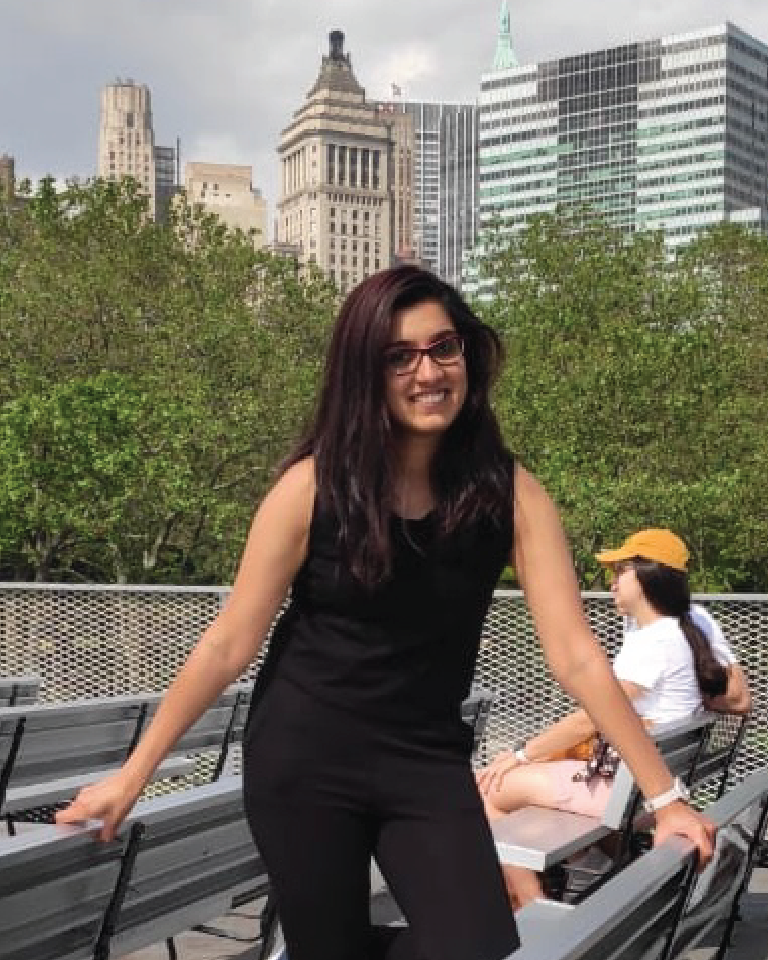Srishti Baid

March 2022 Mentor Spotlight
Department: Molecular Biosciences
Questions:
Q: Describe your research/creative scholarship in a few sentences that we can all understand.
A: Chlamydia trachomatis, an infectious bacterium, accounts for the highest cases of bacterial sexually transmitted infection in the United States. Due to our limited knowledge of the mechanism of infection and disease-causing ability, there are only fewer treatment options available. My research aims to unravel some of the factors or genes that are responsible for the progression of its developmental cycle which eventually contributes to chlamydial infection.
Q: What does your research look like on a day-to-day basis? What do you spend most of your time doing?
A: Every day is a new day in research. Typically, I have experiments planned, which have varying lengths depending on the kind of experiment. I spend maximum time planning, executing experiments, analyzing data, and putting it in the context of the bigger picture of our research story. The accomplishment of these activities is complemented with troubleshooting and lab managing activities. Apart from that, I also make it a point to regularly interact with my mentee, Emily, and peers to discuss work. I have a conversation about work and progress with my mentor on a regular basis too.
Q: How did you first get interested in doing research or creative work?
A: I did BS in Microbiology and MS in Medical Biotechnology from India. I got my first real ''research exposure'' as a part of my Master's dissertation work in a lab in Bangalore, India. That's where I realized I had a passion for research and how much I enjoyed doing it. Science and data got me excited but I was also intrigued when things did not work. I also made great friends there, who taught me to question science and think critically, I am thankful for that.
Q: What do students in your discipline learn by doing research that they wouldn’t learn by just taking classes?
A: Being involved in research lab trains young minds how to think critically, how the process of science works and the rigor it takes to prove a hypothesis. It gives them a chance to apply a lot of their theoretical learning in practice. It not only teaches laboratory techniques but also enhances soft skills and teamwork through discussion and collaborations.
Q: What do you find to be the most exciting part of doing research or creative work? What makes this line of work meaningful and interesting to you?
A: You get to mentor and be a mentee at the same time! I get to implement what I learn from my seniors and also teach what I learn. I enjoy Science and the feeling of being a scientist and contributing to fill in the gap of knowledge in the field.
The ability to contribute to biology and the progression of science that will someday enable a better future gets me motivated to do what I enjoy...
Q: For many students, doing research or a larger creative project is the first time they have done work that routinely involves setbacks and the need to troubleshoot problems. Can you tell us about a time that your research didn’t go as expected? Or about any tricks or habits that you’ve developed to help you stay resilient in the face of obstacles?
A: Research has its own set of challenges, but when you troubleshoot it by yourself that happiness is incomparable. It's like a math problem that you are struggling with but when you solve it, you feel like you are on top of the world. My motto is if it did not work tweak the parameters and optimize the conditions and give it another go. It may not be the best one, but I feel optimism is the best resilient tactic in research. It will work out in the end and that's my hope!
Q: How do you spend your time outside of work?
A: I am involved in science and outreach activities outside work! That's fun and educational. I also like to travel and do fun things with my husband, and catch up with my friends. I also enjoy going out for Boba!
Twitter: @BaidSrishti